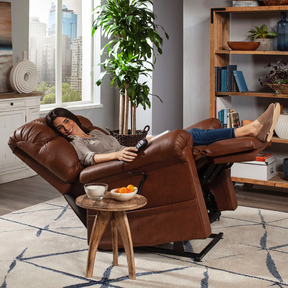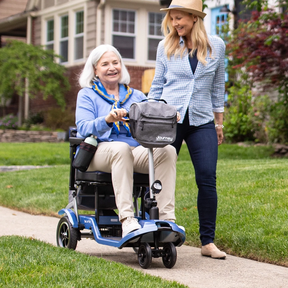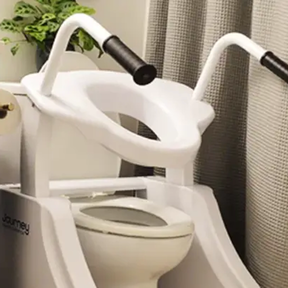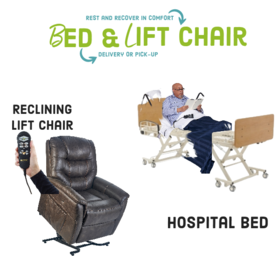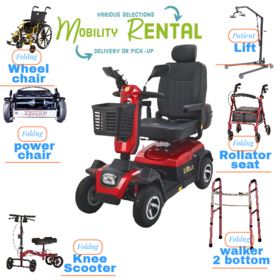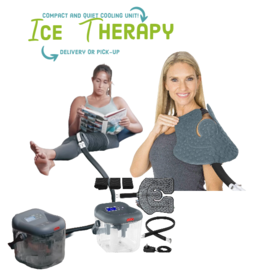Blog Injuries and Conditions That May Require the Use of a Knee Scooter
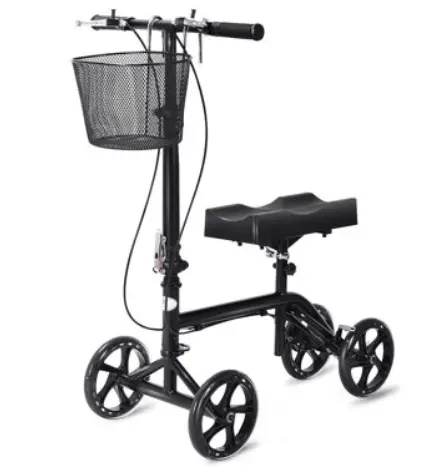
A knee scooter is a medical mobility device that offers a safe, comfortable, and easy-to-maneuver alternative to crutches for individuals recovering from an injury or surgery below the knee, which needs the foot and leg to remain non-weight bearing during the rehabilitation process.
Knee walkers offer weight-bearing comfort to those who have suffered injuries such as broken bones, diabetic ulcers or wounds, ruptured Achilles tendons, sprained ankles, or surgery on the foot or ankle. They can also be used for partial or total amputations of the foot to achieve permanent mobility, or they can be used as a temporary solution. At the same time, the wound heals, and a prosthesis is fitted.
Knee walkers include a raised, cushioned platform designed to accommodate the user's knee while providing constant support for a damaged limb. This design allows the user to balance naturally by using both legs instead of standing on only one leg, as required while using crutches. After that, you push off with your healthy leg and steer the unit by moving the handlebar to control the direction the front wheels face. During the entire surgical procedure, your wounded leg will be kept elevated and not bear any weight.
Riding knee scooters may seem intimidating at first. You will get used to it in no time if you follow these simple steps
1. Put the knee scooter on a flat, level surface.
2. Put your injured leg on the knee scooter, with the knee pad supporting your knee.
3. Put your other leg on the opposite side of the knee scooter, and hold onto the handlebars.
4. Push off with your good leg, and then use your injured leg to help propel you forward.
5. To turn, lean slightly in the direction you wish to turn and use your good leg to push off.
6. To stop, use your good foot to apply pressure to the ground. 7. When you’re finished, park the knee scooter in a safe place.
How long should I use a knee scooter after injury or surgery? The duration of knee scooter use after an injury or surgery will depend on the individual situation and the type of injury or surgery. Generally, it is recommended to use a knee scooter as long as necessary to allow the injured area to heal properly while also providing some support and comfort. In some cases, this may be up to six weeks or longer.
What is the age limit to use a knee scooter?
There is no age limit to using a knee scooter. However, it is important to consult a doctor or physical therapist to ensure that a knee scooter is the best and safest option for you.
What is the best option for knee scooter use, buying or renting?
It depends on your individual needs and preferences. Renting may be the most cost-effective option if you only need the knee scooter temporarily. However, purchasing may be the better option if you plan to use the knee scooter on a more regular basis.
What is the best knee scooter after lower leg surgery?
The best knee scooter after a lower leg surgery depends on the user's needs. Generally, the best knee scooters are lightweight, adjustable, and easy to maneuver. Look for scooters with good padding, adjustable handlebars, and adjustable height. Finding a stable scooter that offers good traction on different surfaces is also important.
There are a lot of different scenarios in which you might want to think about using a knee scooter. After suffering an injury, it is of the utmost importance to ensure that your body is in tip-top shape, and employing the appropriate equipment can assist in speeding up the healing process.
The following are three instances in which you might find it beneficial to make use of a knee scooter:
- Foot Injuries
An injury to the foot forces a person to use it less, which indicates that a person could benefit greatly from using a knee scooter. When you take a step, your feet absorb roughly 120% of your body's weight, which presents a significant challenge if your feet become injured. Not to add, it increases by over 300 percent when you run.
- Sprained Ankles
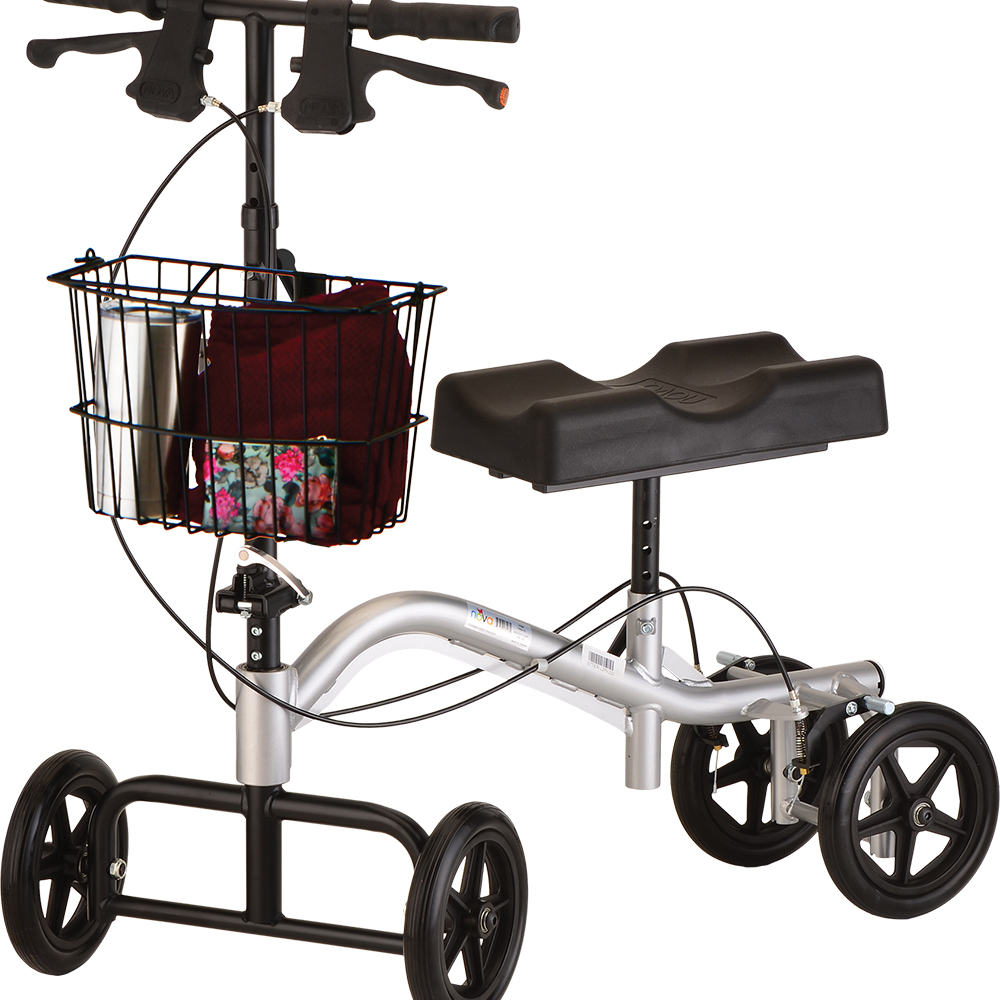
Sprained ankles aren't typically life-threatening, but they make it very difficult to move around. You will have increased mobility and flexibility during your recovery if you use a knee walker. Why bother using crutches when there are other ways to simplify your life?
- Post Surgery
If you have surgery for an injury to your lower extremities, you should consider investing in a knee scooter before the procedure. The "non-weight-bearing" prescription for a faster recovery for things like hindfoot or arthrodesis sometimes calls for the patient to use a mobility device such as a scooter to get around after surgery. Scooters can aid with this recommendation.
There are a variety of circumstances in which you can find yourself in need of a knee scooter. The preceding examples are examples of situations where utilizing one is highly recommended by us.
Pros of Using a Knee Scooter
- A Better Alternative to Other Mobility Aids
When it comes to errands like going to the store, work, or even vacation, a knee scooter makes all of these experiences noticeably simpler and more natural. You are free to move about without the restrictions of crutches or a wheelchair, and you do not require the assistance of other people to get around.
- Maintaining a Good Posture When Getting Around
By maintaining an upright and natural stance while using a knee scooter, with your shoulders pulled back and your "good" leg continuing in a comfortable stride, you can alleviate some of the tension that would otherwise be placed on your back. Because it requires you to use both legs to propel yourself along, a knee scooter helps keep your balance and remain stable while preventing muscle atrophy.
- Conserving Your Energy
When you walk with a knee scooter, you don't have to physically raise a pair of crutches up and down to walk, and you also don't have to move the wheels of a wheelchair manually. This saves your physical energy, which you can use toward other activities.
- Better Speed
You can go around considerably faster on a knee scooter by just pushing the scooter forward like a skateboard and gliding in the direction you want. This makes getting around a lot easier.
- Easy Storage When Not in Use
There is never any lifting involved when using knee scooters. When it is not used, it may be stored easily by leaning against a chair or wall.
What Are the Cons of Knee Scooters?
- Limited to Mild Injuries or Disabilities
People with injuries lower than the knee are the only ones who can utilize knee scooters.
Price
The cost of knee scooters is higher than that of other types of mobility aids, such as crutches.
- Insurance Coverage
You will need to check your policy because knee scooter coverage is not included in all health insurance plans. Because the facts regarding coverage may evolve over time, it is in your best interest to contact your health insurance provider to obtain the most recent details.
Tags
- contest
- event
- supplies
- design
- brand
- video
- Compression
- upright walker
- four wheel walker
- rollator
- wheelchair
- Ostomy
- elegantly
- elegantly
- accessibility
- Mobility
- knee walker rental
- knee scooter sales
- knee scooter
- post operative shoe
- anti-embolic stockings
- pain management
- cryotherapy therapy
- hot cold compress
- compression stockings
- lift chair
- wound Care
- air purifier
- fall prevention
- cushion
- oxygen therapy
- cpap, bipap
- Hospital Bed
- Life Aide
- EMS
- recovery
- splint
- knee brace
- Bathroom
- patient lift
- medical supply
- Wound dressings
- Lightweight Wheelchair
- hospital beds for sale
- sky medical supplies rentals
- compression socks
- Adult Diapers
- Rollator Walker
- Bed Wedge Pillow
- Hospital beds
- Patient Lifts and Slings
- Portable Oxygen Concentrator
- Patient Lift Slings
- knee scooter rental
- folding mobility scooter
- mobility scooter
- medical shoes
- raised toilet seat
- hospital beds for rent
- lift chair recliner
- chair lift
- electric wheelchair
- Power Lift Recliners for Elderly
- Senior Walkers
- Bedside Commodes
- whill wheelchair
- compression hose
- Whill Electric Wheelchairs
- Bariatric Wheelchair
- Recliner Chairs with Lift
- Colostomy Bag
- Crutches
- Medical Wedge Pillow
- skin barrier tape
- Post Surgery Ice Machine
- Bedside Commode
- chair lift recliners
- cane holder scooter
- lift chair prices
- drop arm commode
- rollator walker with ergonomic seats
- Hospital Bed Rental
- Wheelchair Tray
- Golden Technologies Lift Chair
- Nova GetGo Junior Rollator
- power lift recliners
- Knee Scooters and Crutches:
- stand up walker for seniors
- stand up walker as seen on TV
- Women's Walking Canes
- Knee Immobilizers
- Bed Wedge Pillow
- Medical Supply Stores
- Sit to Stand Lifts
- Grab Bars
- Compression Gloves
- incontinence bed pads
- Lift Reclining Chair
- Knee Walker Scooters
- Hernia Belt Near You
- Mobility Scooter Stores Near Me
- Folding Knee Walker
- Oxygen Concentrator Store
- Inogen Battery
- Electric Bed Frames
- Placing Lift Chair
- diaper brief
Related Posts
Get weekly articles in your inbox on the latest medical supply news, exclusive deals, and helpful health tips.
